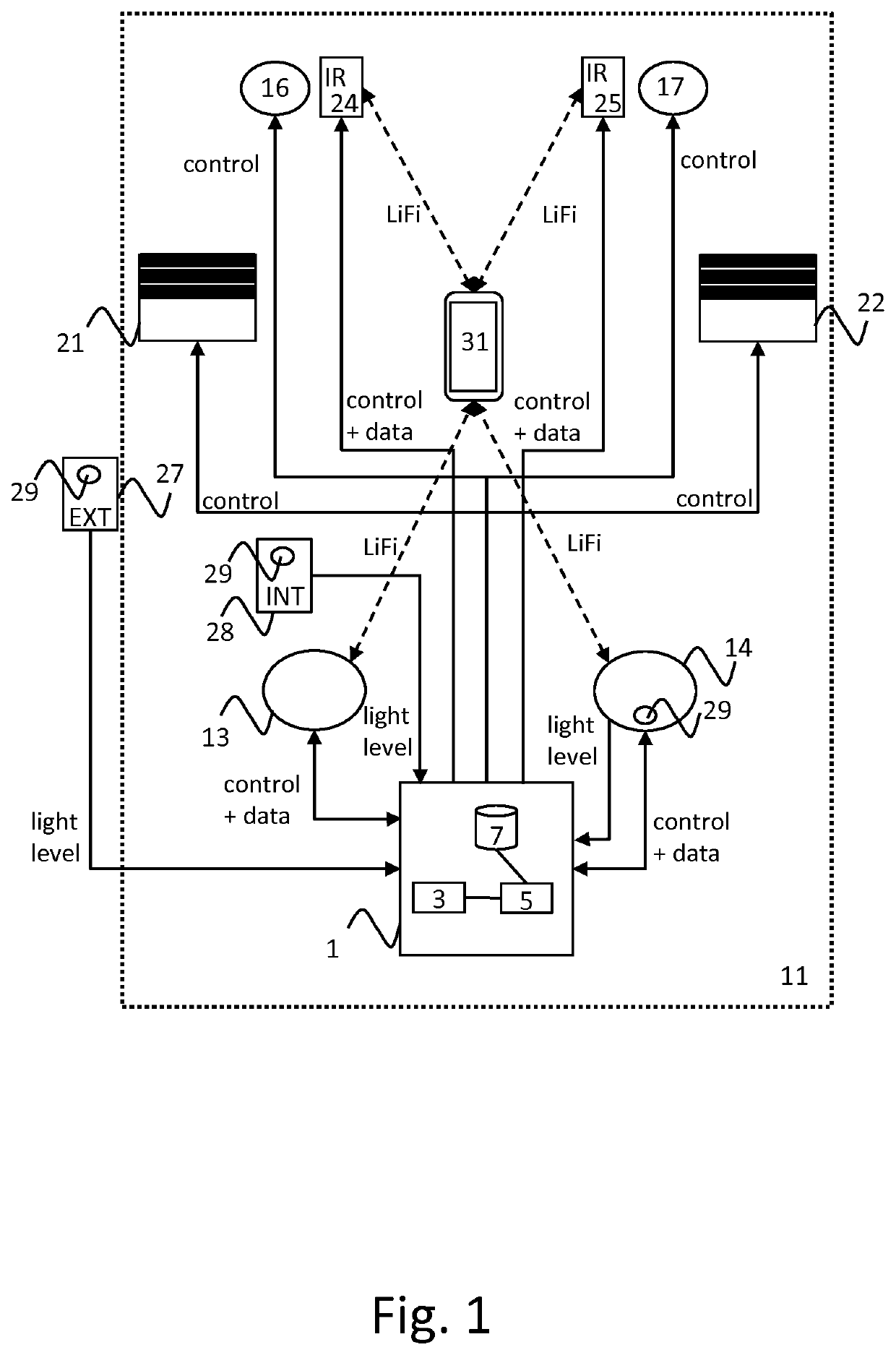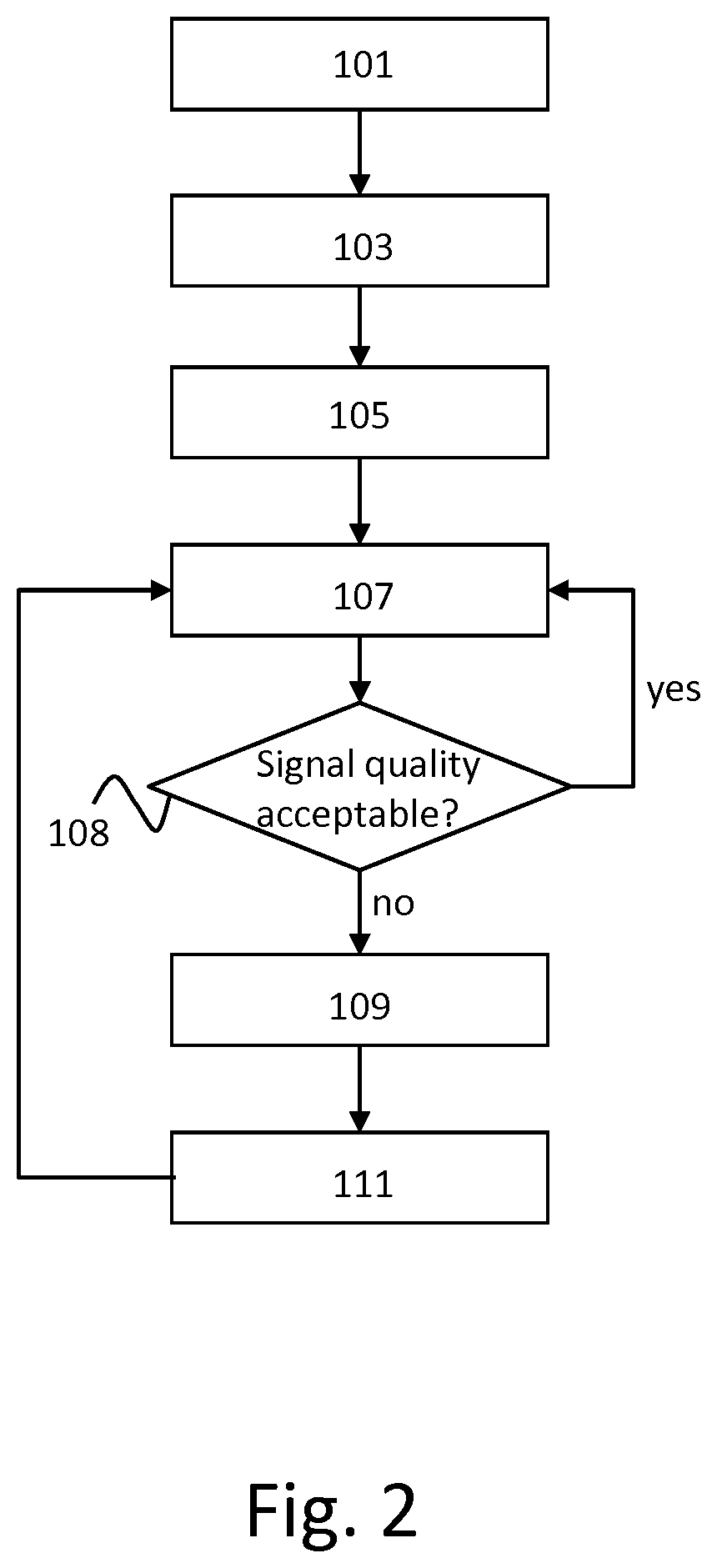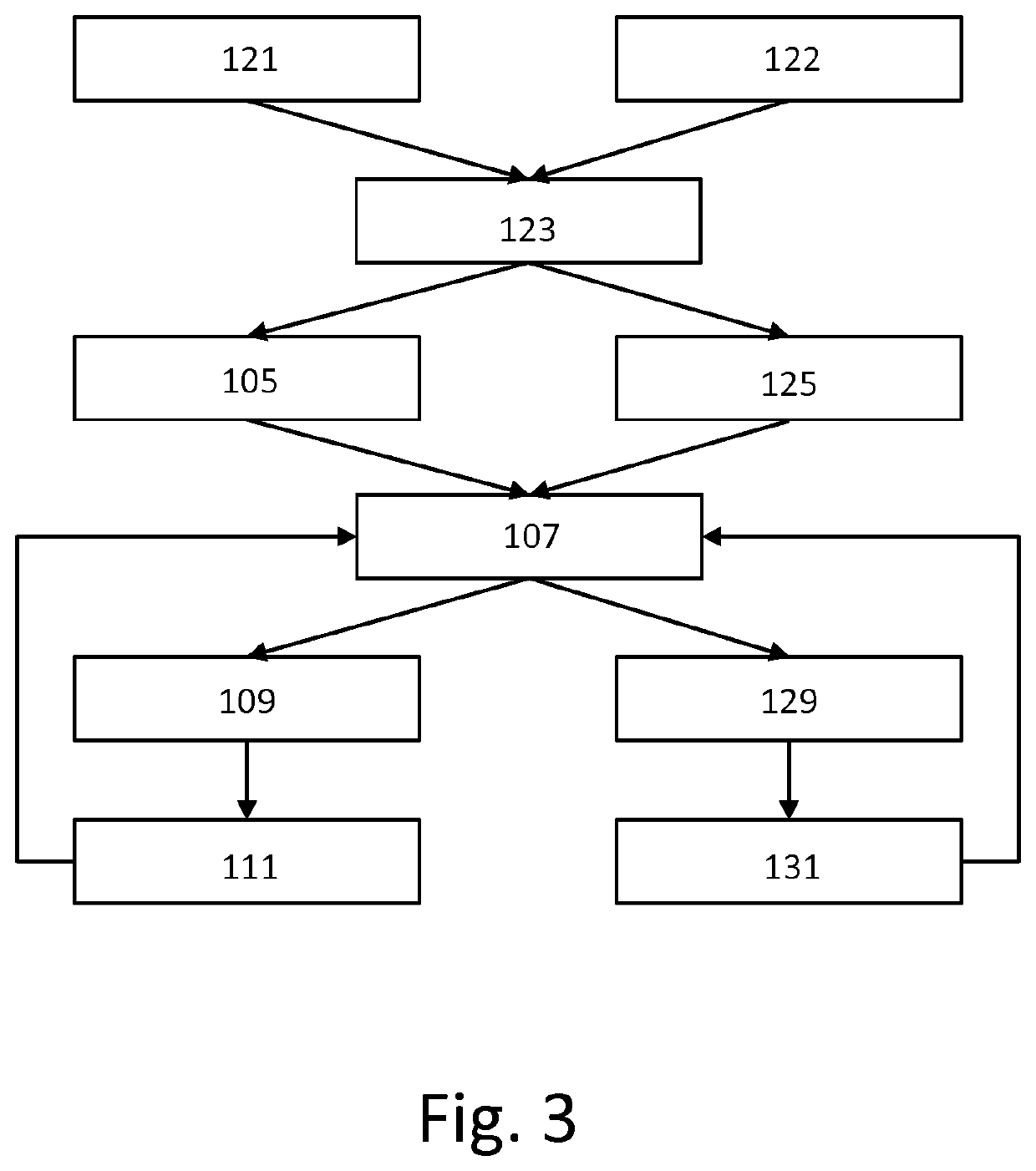Determining Light Settings and/or Daylight Blocker Settings Based on Data Signal Quality
a technology of data signal quality and light setting, applied in the direction of electromagnetic transmission, electrical equipment, close-range type systems, etc., can solve the problems of inability to operate lifi and light source needs to be brighter
- Summary
- Abstract
- Description
- Claims
- Application Information
AI Technical Summary
Benefits of technology
Problems solved by technology
Method used
Image
Examples
first embodiment
[0058]the method of the invention is shown in FIG. 2. In this embodiment, the method does not control lights 16, 17, 24 and 25 of FIG. 1. A step 101 comprises obtaining a target light level. In this embodiment, the target light level is a target light level for visible light. A step 103 comprises determining a first set of light settings for lights 13 and 14 and a first set of daylight blocker settings for daylight blockers 21 and 22 based on the target light level. A step 105 comprises controlling the lights 13 and 14 based on the first set of light settings and the daylight blockers 21 and 22 based on the first set of daylight blocker settings.
[0059]A step 107 comprises receiving from the user device 31 information indicating a quality of a data signal received by the user device from one or more lights of the set of lights. The data signal is transmitted by modulating a light signal. The signal quality is determined by the user device 31. A step 108 comprises determining whether ...
second embodiment
[0062]the method of the invention is shown in FIG. 3. In this embodiment, the method does not control lights 24 and 25 of FIG. 1. Steps 121 and 122 replace step 101 of FIG. 2. Step 121 comprises obtaining a target light level for lights transmitting data. Step 122 comprises obtaining a target visible light level. Step 123 replaces step 103 of FIG. 2. Step 123 comprises determining the first set of light settings for lights 13 and 14, the first set of daylight blocker settings for daylight blockers 21 and 22, and a first set of further light settings for lights 16 and 17 based on the target light level for lights transmitting data and the target visible light level.
[0063]For example, the light settings for lights 13 and 14 may first be determined such that the target light level is achieved and next, the settings for the lights 16 and 17 and for the daylight blockers 21 and 22 may be determined such that the target visible light level is achieved. The lights 13 and 14 include only li...
third embodiment
[0067]the method of the invention is shown in FIG. 4. In this embodiment, the method does not control lights 24 and 25 of FIG. 1. Step 101 comprises obtaining a target light level. In this embodiment, the target light level is a target light level for visible light. A step 151 comprises obtaining a measured light level, e.g. from light sensor device 28 or LiFi light 14. Step 153 comprises checking whether the measured light level falls in a range of acceptable values, e.g. 390-410 lux, 580-620 lux, or 600+ lux. If it does not, steps 103 and 105 are performed. If it does, steps 103 and 105 are skipped.
[0068]In the embodiment of FIG. 4, step 103 comprises a sub step 155. Step 155 comprises determining a first set of light settings for lights13, 14, 16, and 17 and a first set of daylight blocker settings for daylight blockers 21 and 22 based on the target light level and the measured light level. Step 105 comprises controlling the lights 13, 14, 16, and 17 based on the first set of lig...
PUM
 Login to View More
Login to View More Abstract
Description
Claims
Application Information
 Login to View More
Login to View More - R&D
- Intellectual Property
- Life Sciences
- Materials
- Tech Scout
- Unparalleled Data Quality
- Higher Quality Content
- 60% Fewer Hallucinations
Browse by: Latest US Patents, China's latest patents, Technical Efficacy Thesaurus, Application Domain, Technology Topic, Popular Technical Reports.
© 2025 PatSnap. All rights reserved.Legal|Privacy policy|Modern Slavery Act Transparency Statement|Sitemap|About US| Contact US: help@patsnap.com



